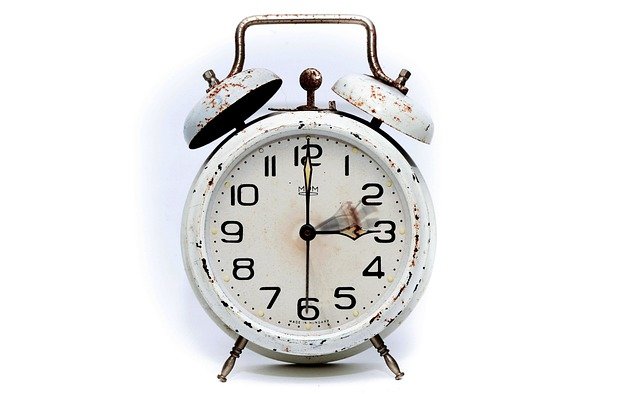The History and Science of Alarm Clocks
Alarm clocks are tools people have used for hundreds of years to help wake up on time. From early mechanical clocks to modern digital devices, alarm clocks have changed a lot. This article explores how they work, their different types, and the ways people have used them every day.

Alarm clocks represent one of humanity’s most enduring inventions, serving as reliable timekeepers and wake-up companions for centuries. These devices have transformed from rudimentary mechanical systems to advanced digital technologies, reflecting broader changes in society and technology. Today’s alarm clocks incorporate features that ancient inventors could never have imagined, yet they serve the same fundamental purpose of helping people manage their daily schedules.
How Did Alarm Clocks Originate Throughout History
The earliest alarm mechanisms date back to ancient civilizations, where people used water clocks and candle clocks to mark specific times. Ancient Greeks developed the klepsydra, a water clock that could sound an alarm when water reached certain levels. Chinese inventors created incense clocks that burned at predictable rates, releasing metal balls onto gongs at predetermined intervals. These early systems required careful preparation and constant attention, making them less reliable than modern alternatives.
Medieval monasteries refined timekeeping with mechanical bells and tower clocks, establishing regular prayer schedules that influenced entire communities. The development of spring-driven clocks in the 15th century marked a significant advancement, allowing for more portable and accurate timekeeping devices that could be placed in individual homes.
How Do Alarm Clocks Function Mechanically and Digitally
Mechanical alarm clocks operate through intricate systems of gears, springs, and escapements that regulate time movement. The mainspring provides energy, while the escapement mechanism controls the release of this energy in precise intervals. When the alarm time arrives, a separate spring-driven mechanism triggers a hammer that strikes a bell or buzzer, creating the familiar alarm sound.
Digital alarm clocks function through electronic circuits and quartz crystals that vibrate at exact frequencies. These vibrations are counted by microprocessors to maintain accurate time, while programmable chips store alarm settings and control various features. Modern digital clocks can incorporate radio receivers, Bluetooth connectivity, and smartphone integration, expanding their functionality far beyond simple timekeeping.
What Stages Mark the Evolution of Alarm Clocks
The evolution of alarm clocks progressed through distinct technological phases, each building upon previous innovations. The mechanical era dominated from the 1600s through the early 1900s, featuring wind-up mechanisms and bell alarms that required daily winding. The electric period began in the 1930s, introducing plug-in models with consistent power sources and more reliable timing mechanisms.
The digital revolution of the 1970s brought LED and LCD displays, battery backup systems, and programmable features. The modern era encompasses smart alarm clocks with internet connectivity, voice control, and integration with home automation systems. Each stage reflected broader technological trends while addressing specific user needs for accuracy, convenience, and reliability.
What Different Types of Alarm Clocks Exist Today
Contemporary alarm clocks encompass a wide variety of designs and functionalities to suit different preferences and lifestyles. Traditional analog clocks maintain classic mechanical movements with modern materials and improved accuracy. Digital bedside clocks offer multiple alarms, radio functions, and USB charging ports for electronic devices.
Smart alarm clocks incorporate artificial intelligence, weather updates, and voice assistants, transforming into comprehensive bedroom hubs. Sunrise simulation clocks gradually increase light intensity to mimic natural dawn conditions, promoting healthier wake-up experiences. Specialty alarm clocks include vibrating models for hearing-impaired users, projection clocks that display time on walls or ceilings, and travel-sized options for portable convenience.
How Do Mechanical and Digital Alarm Clocks Compare
Mechanical and digital alarm clocks each offer distinct advantages and limitations that appeal to different user preferences. Mechanical clocks provide reliability during power outages, distinctive aesthetic appeal, and the satisfying ritual of daily winding. They typically produce louder, more penetrating alarm sounds that effectively wake heavy sleepers, though they require regular maintenance and may lose accuracy over time.
Digital alarm clocks excel in precision, programmability, and additional features like radio, weather displays, and smartphone connectivity. They maintain consistent accuracy without manual adjustment and often include battery backup systems for power interruptions. However, digital models depend on electrical power, may have complex interfaces, and can become obsolete as technology advances. The choice between mechanical and digital often reflects personal preferences for simplicity versus functionality, traditional aesthetics versus modern convenience.
Alarm clocks continue evolving as technology advances, incorporating new features while maintaining their essential function of helping people manage time effectively. Whether mechanical or digital, these devices remain indispensable tools for organizing daily routines and ensuring punctual starts to each day. Understanding their history and functionality helps appreciate the ingenuity behind these seemingly simple yet remarkably sophisticated timekeeping companions.




